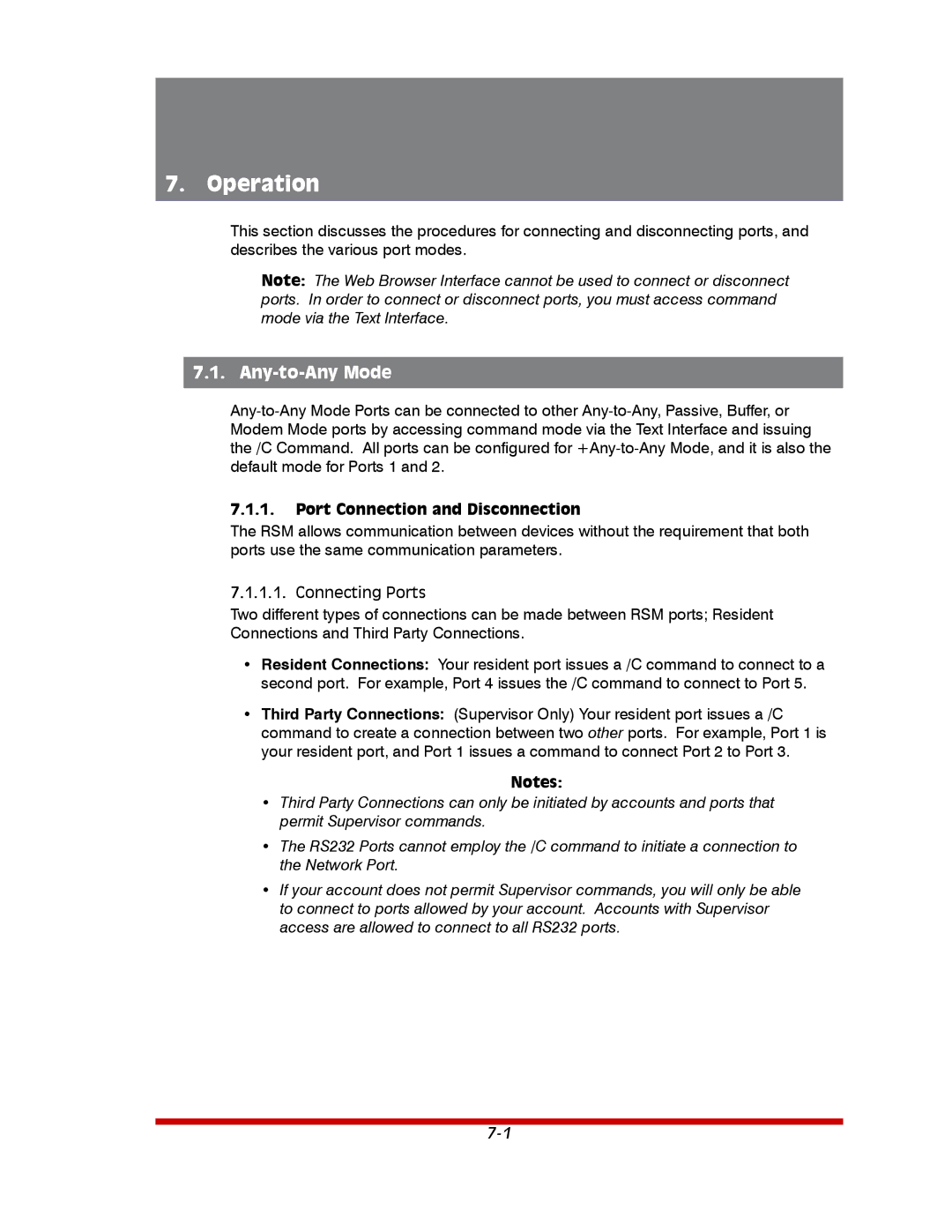
7. Operation
This section discusses the procedures for connecting and disconnecting ports, and describes the various port modes.
Note: The Web Browser Interface cannot be used to connect or disconnect ports. In order to connect or disconnect ports, you must access command mode via the Text Interface.
7.1. Any-to-Any Mode
7.1.1.Port Connection and Disconnection
The RSM allows communication between devices without the requirement that both ports use the same communication parameters.
7.1.1.1. Connecting Ports
Two different types of connections can be made between RSM ports; Resident Connections and Third Party Connections.
•Resident Connections: Your resident port issues a /C command to connect to a second port. For example, Port 4 issues the /C command to connect to Port 5.
•Third Party Connections: (Supervisor Only) Your resident port issues a /C command to create a connection between two other ports. For example, Port 1 is your resident port, and Port 1 issues a command to connect Port 2 to Port 3.
Notes:
•Third Party Connections can only be initiated by accounts and ports that permit Supervisor commands.
•The RS232 Ports cannot employ the /C command to initiate a connection to the Network Port.
•If your account does not permit Supervisor commands, you will only be able to connect to ports allowed by your account. Accounts with Supervisor access are allowed to connect to all RS232 ports.
